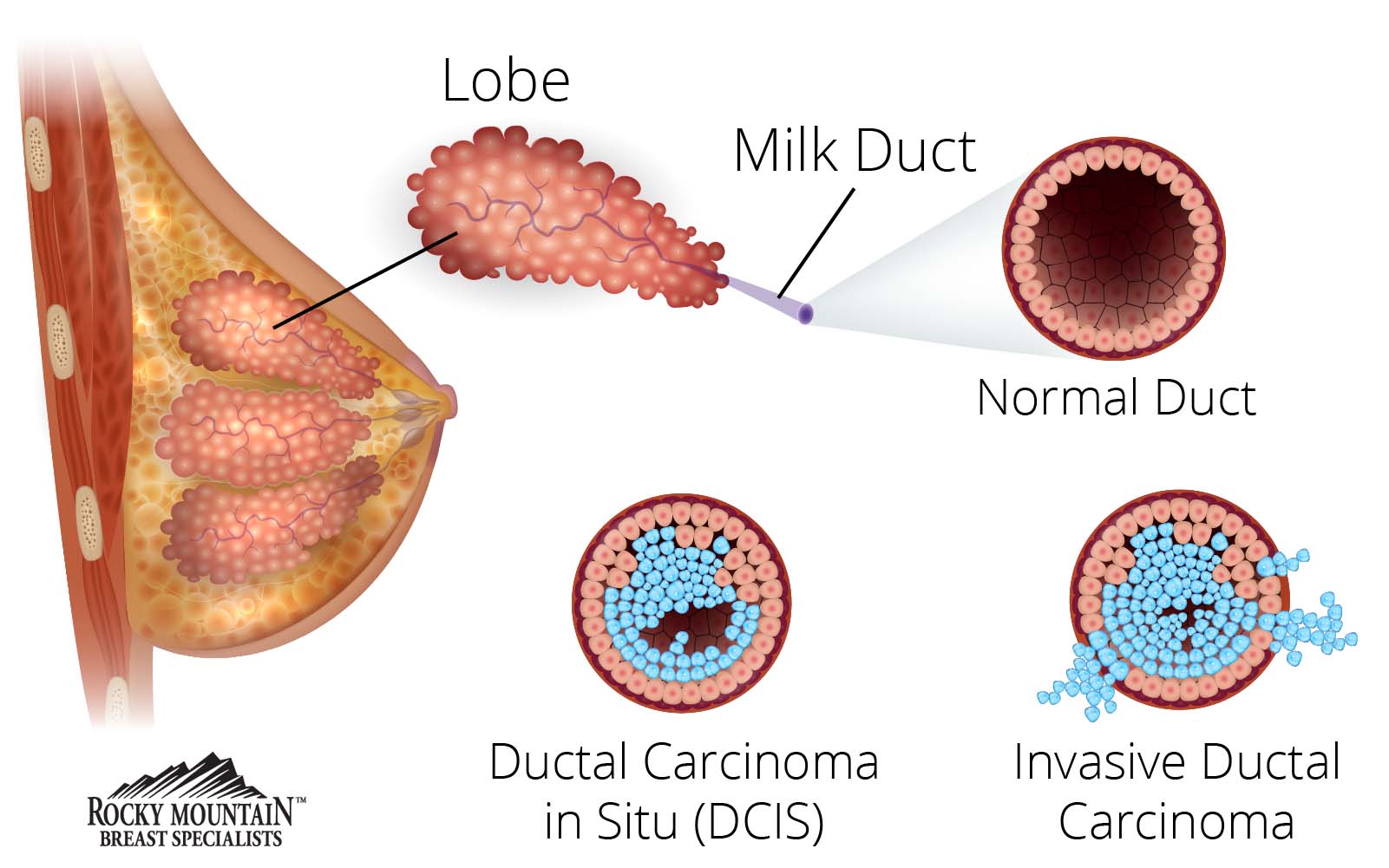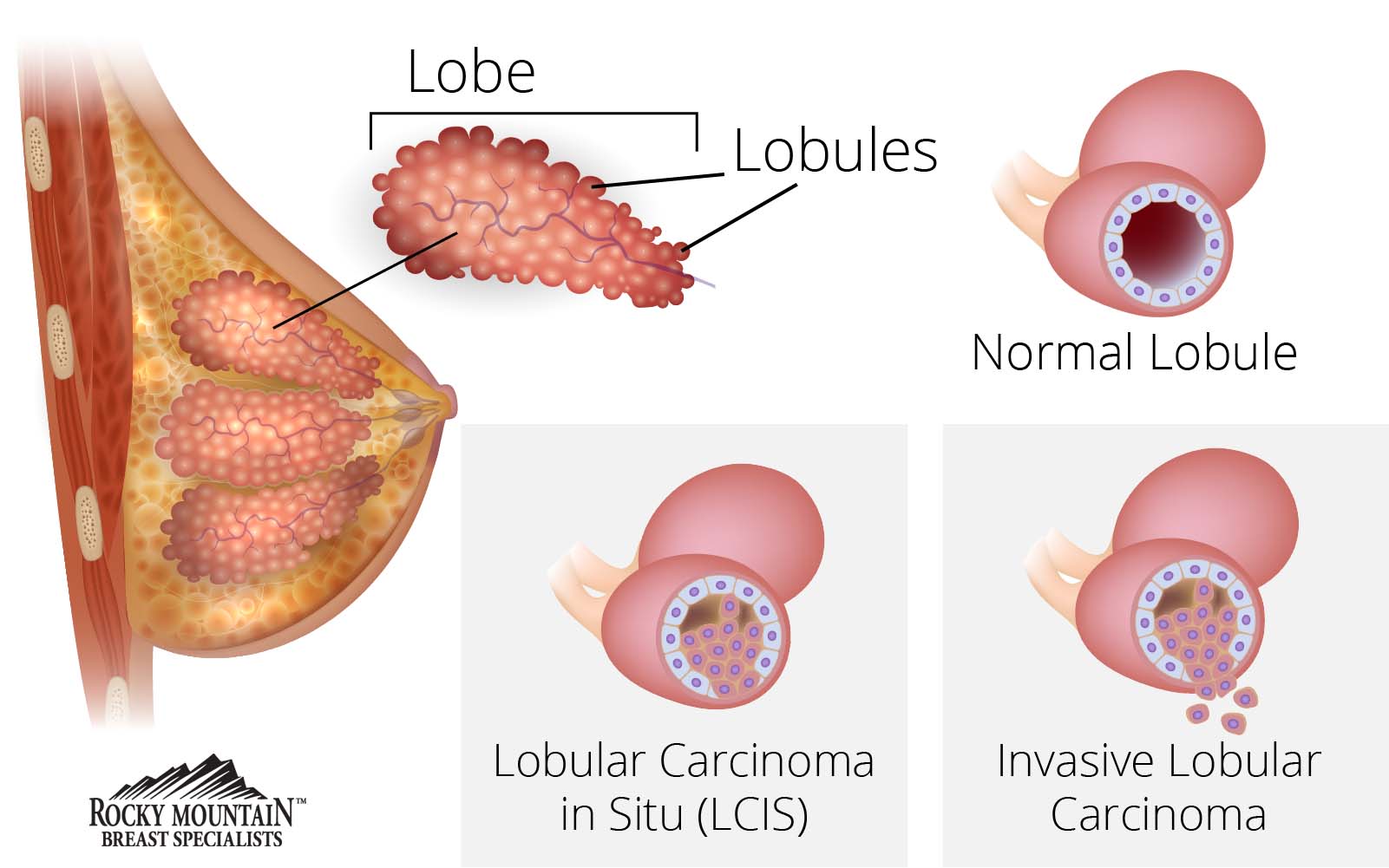Breast Cancer Types & Hormone Receptors
Something you might not realize is that breast cancer is not a single disease, but rather a broad term that covers a number of different types of the disease. Because of this, your treatment plan may look completely different than another patient’s treatment plan, all because of your specific breast cancer type.
Determining Your Breast Cancer Type
At Rocky Mountain Breast Specialists (RMBS), we understand that learning about breast cancer can be overwhelming, especially if you were recently diagnosed. It's a challenge not only for you but also for your friends and relatives. One of the biggest questions you may be asked is, "What kind of breast cancer is it?" That's because the type affects the breast cancer treatments you're going to receive.
Determining the type of breast cancer is a process that involves an evaluation of the tissue sample collected from your breast biopsy.
We will look at several factors including:
- Where did the cancer cells originate?
- How abnormal do the breast cancer cells look under the microscope?
- Do the breast cancer cells react to hormones such as estrogen or progesterone?
- Do the cancer cells grow from an excess amount of HER2 protein?
- What is the genetic makeup of the cancer cells?
We will then use that information to create a personalized treatment course that reflects your goals, personal desires, and unique nature of your particular type of breast cancer.
If you're just learning about breast cancer after a diagnosis and would like to schedule a consultation with one of our breast cancer specialists, request an appointment at one of the Rocky Mountain Breast Specialists locations throughout Colorado.
Breast Cancer Education Center
Breast Cancer Types
On a broader scale, breast cancer can occur in two categories: invasive and noninvasive. Cancer categorized as invasive (infiltrating) means the cancer has spread to other parts of the body. Noninvasive (in situ) cancer, on the other hand, means that the cancerous cells are still confined to their point of origin.
Common Breast Cancer Types
Navigating the language of cancer can be confusing, especially when it comes to learning about the different types of breast cancer. Know that we will be with you every step of the way and are here to answer any questions you may have regarding your specific breast cancer type.
Some breast cancers are more common than others. These common types include:
Invasive Ductal Carcinoma
Invasive ductal carcinoma (IDC) means that abnormal cells that originated in the lining of the breast milk duct have invaded surrounding tissue. Over time, IDC can spread to the lymph nodes and possibly to other areas of the body. This is the most common type of breast cancer, accounting for approximately 80% of all breast cancers.
Ductal Carcinoma in Situ

Lobular Carcinoma in Situ
Lobular carcinoma in situ (LCIS), also sometimes called lobular neoplasia, is actually not considered a cancer or a pre-cancer. This is because LCIS doesn’t turn into invasive cancer if untreated. Rather, LCIS is an indication that a person is at a higher risk of getting breast cancer later on.
Invasive Lobular Carcinoma

Free Guide for Newly Diagnosed Breast Cancer Patients
How will your breast cancer type affect your treatment? Get helpful tips on what to expect and how to prepare your mind and body for breast cancer treatment.
Because breast cancer is not a one-size-fits-all disease, neither is treatment. Typically, your breast cancer treatment plan will be personalized and based on your specific stage and type of breast cancer. However, it is critical to determine which hormones, if any, are involved in the growth of your breast cancer.
Your RMBS oncologist will run some tests that indicate the hormone receptor status and HER2/neu (a protein found in some types of cancer cells) status of your breast cancer tumor. These results will play a large role in the type of breast cancer treatment that we recommend for you.


Hormone Receptor Status in Breast Cancer
The hormone receptor status of your breast cancer refers to whether your breast cancer cells are fueled by estrogen and/or progesterone (the naturally occurring hormones in the female body) due to special proteins inside the tumor cells, called hormone receptors. When hormones attach to hormone receptors, the cancer cells grow.
A hormone receptor status is either hormone receptor (HR) positive or hormone receptor (HR) negative.
- Hormone receptor-positive breast cancer cells have either estrogen (ER) or progesterone (PR) receptors. These breast cancers can be treated with hormone therapy drugs that lower estrogen levels or block estrogen receptors. HR-positive cancers tend to grow more slowly than those that are HR-negative. HR-positive cancers are generally more common in women after menopause.
- Hormone receptor-negative breast cancers do not have estrogen or progesterone receptors. These types of cancers will not benefit from hormone therapy drugs and typically grow faster than HR-positive cancers. HR-negative cancers are more common in women who have not yet gone through menopause.
When these receptors attach to the hormones estrogen and progesterone and grow, it can leave you with one of four results:
- Estrogen-receptor positive or negative (ER+/-): This means the breast cancer cells may or may not have receptors for the hormone estrogen. ER+ results suggest that the cancer cells may receive signals from estrogen that could promote their growth.
- Progesterone-receptor positive or negative (PR+/-): This means the breast cancer cells may or may not have receptors for the hormone progesterone. PR+ results mean that the cancer cells may receive signals from progesterone that could promote their growth.
- HER2 positive or negative: Treatment can also be affected by the presence of HER2 (human epidermal growth factor receptor 2), which is a protein that appears on the surface of some breast cancer cells and plays a role in how a healthy breast cell grows, divides, and repairs itself. Knowing whether they are present will affect the treatment that’s chosen.
- Triple-negative breast cancer: If you are told you have triple-negative cancer, this means your breast cancer cells test negative for estrogen receptors, progesterone receptors, and HER2. Triple-negative breast cancer will be treated differently than the other types of breast cancer since hormones are not playing a role in the breast cancer’s growth.
What is Triple-Negative Breast Cancer?
HER2 Status in Breast Cancer
If your cancer appears to be aggressive and fast-growing, you might have higher levels of a protein called human epidermal growth factor receptor 2, or HER2 for short. Some genes, like HER2 and the proteins they make, do more than play a role in the development of breast cancer. They can also influence how your breast cancer behaves as well as how it may respond to a specific cancer treatment.
Normally, HER2 receptors help control how a healthy breast cell grows, divides, and repairs itself. However, if the HER2 gene doesn’t work correctly and produces too many copies of itself, it leads to uncontrolled growth of breast cancer cells.Find a breast cancer specialist near you.
What does it mean to be HER2- negative or positive?
If your breast cancer is HER2-negative, it means that you do not have an excess of the HER2 gene. Tumors such as these will not respond to therapies that specifically target HER2 receptors.
If your breast cancer is HER2-positive, then you have too much HER2 protein or extra copies of the HER2 gene. These breast cancers tend to be fast-growing. HER2-positive breast cancer treatment typically includes targeted therapy drugs that slow the growth and kill these cancer cells. HER2-positive breast cancers account for about 25% of all breast cancer cases.
Knowing your HER2 status will help your RMBS cancer care team create the best treatment plan for you.
Less Common Breast Cancer Types
Although the breast cancers listed above are the most common, there are some rarer breast cancers that are still worth knowing more about, which include:


